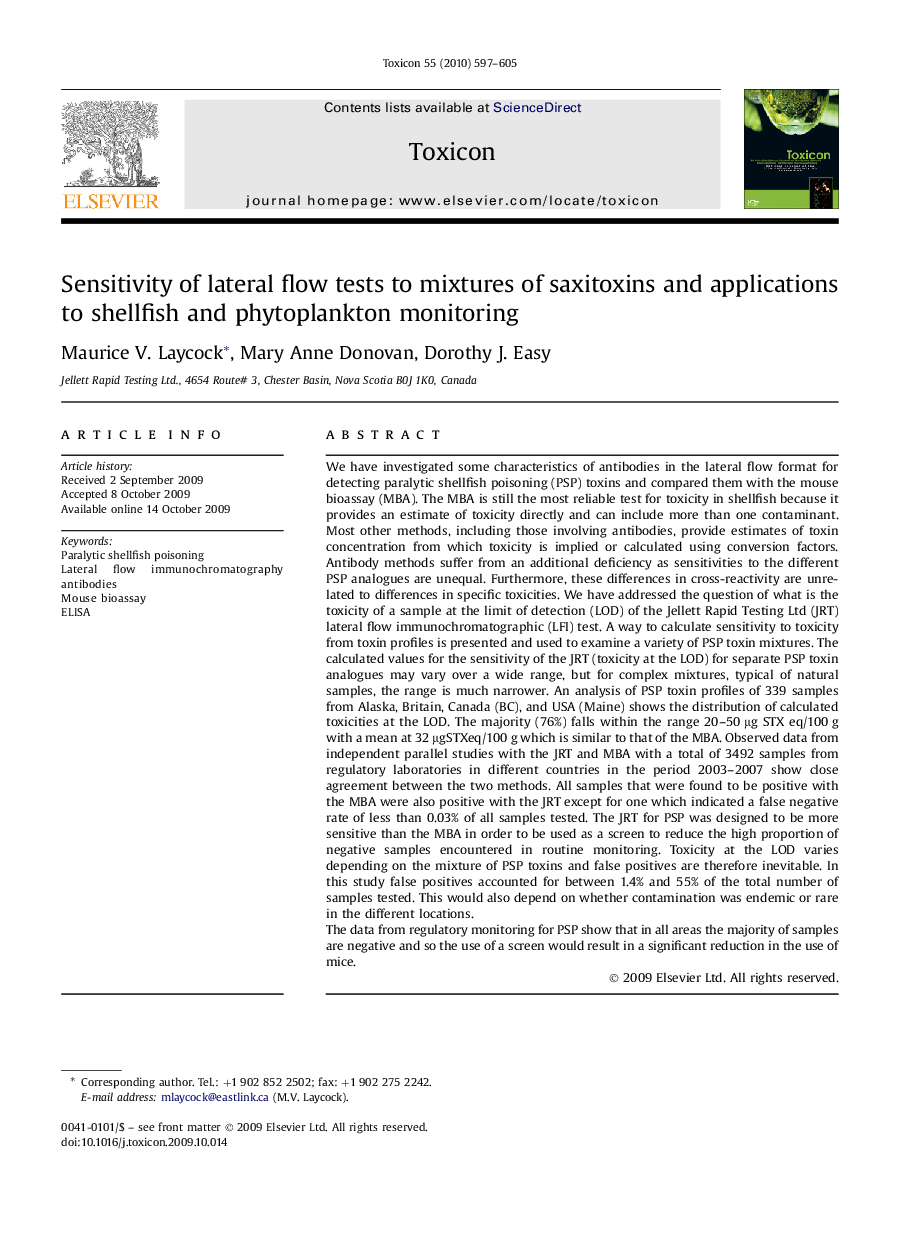| کد مقاله | کد نشریه | سال انتشار | مقاله انگلیسی | نسخه تمام متن |
|---|---|---|---|---|
| 2065359 | 1544179 | 2010 | 9 صفحه PDF | دانلود رایگان |

We have investigated some characteristics of antibodies in the lateral flow format for detecting paralytic shellfish poisoning (PSP) toxins and compared them with the mouse bioassay (MBA). The MBA is still the most reliable test for toxicity in shellfish because it provides an estimate of toxicity directly and can include more than one contaminant. Most other methods, including those involving antibodies, provide estimates of toxin concentration from which toxicity is implied or calculated using conversion factors. Antibody methods suffer from an additional deficiency as sensitivities to the different PSP analogues are unequal. Furthermore, these differences in cross-reactivity are unrelated to differences in specific toxicities. We have addressed the question of what is the toxicity of a sample at the limit of detection (LOD) of the Jellett Rapid Testing Ltd (JRT) lateral flow immunochromatographic (LFI) test. A way to calculate sensitivity to toxicity from toxin profiles is presented and used to examine a variety of PSP toxin mixtures. The calculated values for the sensitivity of the JRT (toxicity at the LOD) for separate PSP toxin analogues may vary over a wide range, but for complex mixtures, typical of natural samples, the range is much narrower. An analysis of PSP toxin profiles of 339 samples from Alaska, Britain, Canada (BC), and USA (Maine) shows the distribution of calculated toxicities at the LOD. The majority (76%) falls within the range 20–50 μg STX eq/100 g with a mean at 32 μgSTXeq/100 g which is similar to that of the MBA. Observed data from independent parallel studies with the JRT and MBA with a total of 3492 samples from regulatory laboratories in different countries in the period 2003–2007 show close agreement between the two methods. All samples that were found to be positive with the MBA were also positive with the JRT except for one which indicated a false negative rate of less than 0.03% of all samples tested. The JRT for PSP was designed to be more sensitive than the MBA in order to be used as a screen to reduce the high proportion of negative samples encountered in routine monitoring. Toxicity at the LOD varies depending on the mixture of PSP toxins and false positives are therefore inevitable. In this study false positives accounted for between 1.4% and 55% of the total number of samples tested. This would also depend on whether contamination was endemic or rare in the different locations.The data from regulatory monitoring for PSP show that in all areas the majority of samples are negative and so the use of a screen would result in a significant reduction in the use of mice.
Journal: Toxicon - Volume 55, Issues 2–3, February–March 2010, Pages 597–605